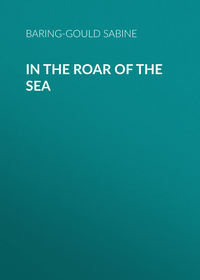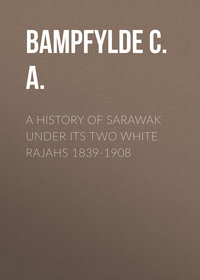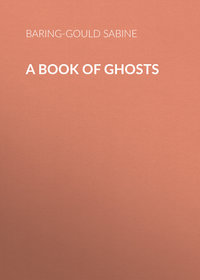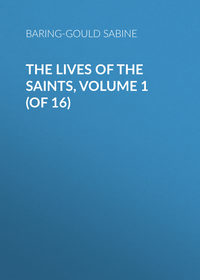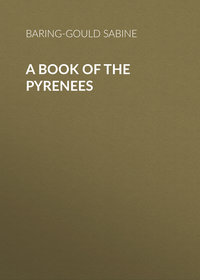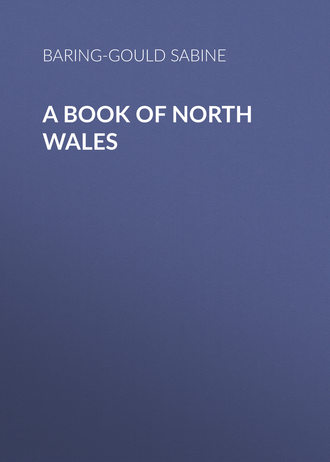 полная версия
полная версияA Book of North Wales
At Towyn there is sea-fishing for others beside cormorants. Good bass angling with a fly can be had where the river enters the sea, and “these somewhat ungainly productions,” says that enthusiastic sportsman Mr. Lloyd Price, “supposed to be the most useful adjuncts to the art, with their red bodies, white and yellow wings, ephemeræ of scorn to the salmon-fishers, display their crude and vulgar proportions in the windows of almost every shop in the town.”
The ascent of Cader Idris can be made from the head of Tal-y-Llyn Lake, and thence the cirque of Cwm Cowarch should be visited, and the wondrous tarn Llyn Caer lying, as it were, at the bottom of a crater.
Near Towyn is Llanegryn, on a height commanding a glorious view, and the church contains a magnificent rood-screen and loft in excellent preservation. In this parish is Peniarth, the house of the Wynns, with its precious legacy of Welsh MSS. The church is crowded with Wynn monuments.
The Wynns are of Irish extraction, deriving from one Osborn Wyddel (the Irishman), who came over in the thirteenth century, and obtained by marriage an estate in Merioneth. He is supposed to have been a junior of the House of the Geraldines, but the evidence is not satisfactory. The family soon became thoroughly Welsh, as far as names go, bearing those of Llewelyn, Gruffydd, Einion, Iorwerth, and quartering the arms of Owen Gwynedd.
Peniarth came to them through marriage with an heiress of the Williams family, whose arms, two foxes counter-salient, form a sign and give a name to many an inn in the Williams-Wynn country, which extends over a large portion of North Wales.
The name of Wynn was not adopted till the sixteenth century. Before that the sons were all aps. The adoption of surnames in Wales that became fixed and hereditary began in single instances with Welshmen who had become familiar with English customs, but it was not general until Rowland Lee, Bishop of Lichfield and President of Wales and the Marches, when calling over the panel of a jury one day, became weary of the repetition of the ap, and directed that “the ancient and worshipful gentleman “Thomas ap William ap Thomas ap Richard ap Howel ap Iefan Fychan, etc., of Mostyn, and the rest of the jury, should thenceforth severally assume as a surname either their last genealogical name or that of their residence. Lee died in 1543. Many of the names one meets with in Wales are thus derived: Bowen is ab Owen, Price is ap Rhys, Pritchard is ap Richard, Bevan is ab Evan, etc.; and John Jones is John son of Jones, and Thomas Evans is Thomas the son of Evan.
When the Welshmen took to giving themselves surnames, very few adopted place-names; but there are some – as Glynne, Trevor, Mostyn. Fewer still assumed such as were descriptive – as Gwyn (White), Llwyd, or Lloyd (Gray).
The majority took patronymic names, and thus we have such swarms of Joneses, Williamses, Davieses, Evanses, Robertses, and Thomases. It has become a real nuisance. “It is impossible,” says a recent writer, “to estimate the inconveniences, the annoyance, and even the suffering, occasioned by this unnecessary dearth of Welsh surnames, and the continued multiplication of the comparatively few in popular use. Indeed, our surnames are so few in number that they almost swamp the population of England in the statistics compiled to show which are the most numerous family names in use among us.”9
To obviate the inconvenience, in Wales it is usual to distinguish one Jones or Williams from another by appending the name of his home or his profession, or a descriptive epithet; but this serves its purpose only when he is in his native country.
Four of the Welsh members of Parliament bear the name of Thomas; and while all share a common initial, two have no other.
“What tales of infinite trouble and everlasting worry our Post Office officials in Wales could tell! How often have our local postmasters to implore persons of the same name, or of the same name and like initials, in the postal districts, to come to some amicable arrangement as to the delivery of their letters and telegrams!”
In a Carnarvonshire will case, heard in July, 1894, the number of Joneses and Robertses called as witnesses during the two days that the action lasted threw judges and counsel engaged into a condition of absolute bewilderment, and turned the court into a patronymical Bedlam.
Sometimes parents, with national enthusiasm, have their sons christened with a truly Welsh name, and are not always careful to select such as will pass smoothly over English tongues, should these sons, on growing up, go out of the Principality. Such was the case with a Rev. T. Mydir Evans, who in England became “Passon Murder Evans.” And what stumbling has been caused over the name of Dr. Gwenogfryn Evans at Oxford!
It was at Bishop Lee’s suggestion, and in the year of his death, that the shires of Wales were formally constituted, though earlier, in 1535, the counties of Denbigh, Montgomery, Merioneth, Glamorgan, Brecon, and Radnor had been constructed out of the old Marches of Wales.
In conclusion, a word must be added relative to the arms of Wales and the three feathers of its Prince’s crest.
Coats-of-arms were assumed and changed very arbitrarily in early days, and there does not seem to have been any fixed rule as to those borne by the several princes. Owen Gwynedd is said to have had on his shield vert, three eagles in fess or, membered and beaked gules, and these are quartered by the Wynns of Peniarth.
But Rhodri the Great had four banners carried before him on which were depicted lions, to represent the principalities of Gwynedd, Powys, Deheubarth, and the Isle of Man, over which his rule extended. Yet the red dragon was the symbol and ensign of the Pendragon, or chief king.
A lion rampant appears to have been the favourite bearing of the princes of Powys. Gruffydd ab Cynan of Gwynedd bore three lions passant gardant in pale argent incensed azure.
Lewis Dwnn, in his Heraldic Visitations of Wales, says that “the recognised arms of the Principality were four lions passant gardant quarterly, and that is the coat now accepted for Wales.”
The red dragon was used by Henry VII. as his crest, and as a supporter on the dexter side, and on the sinister, the greyhound of York.
Henry VIII. retained the dragon, but discarded the greyhound for a lion. The unicorn supplanted the dragon in the reign of James I. The ostrich feather was not properly a Welsh crest at all, but was employed as a badge by Edward III. It was not till the reign of Henry VII. that the three plumes, to represent the three principalities of Wales, in a circlet or coronet, were adopted as a cognisance of the Prince of Wales, and since then have remained as an appropriate symbol; for, indeed, Gwynedd, Powys, and Deheubarth are feathers in the cap of our princes of which they may well be proud.
1
Rhys and Brynmor Jones, The Welsh People, p. 342.
2
A Peris is, however, given as son of Helig ab Glannog (Iolo MSS. p. 124), but is this the same?
3
Rhys and Brynmor Jones, The Welsh People, p. 356.
4
The Vale of Clwyd, by W. Davis. Ruthin, 1856.
5
R. G. Davies, The Visions of the Sleeping Bard, translated. London, 1897.
6
Williams (R.), Montgomeryshire Worthies, p. 79. Newtown, 1894.
7
Bradley, Owen Glyndwr, p. 178.
8
Lloyd Price (R. J.), Walks in Wales, 1893, p. 44.
9
Transactions of the Cymmrodorion Society, 1903.


